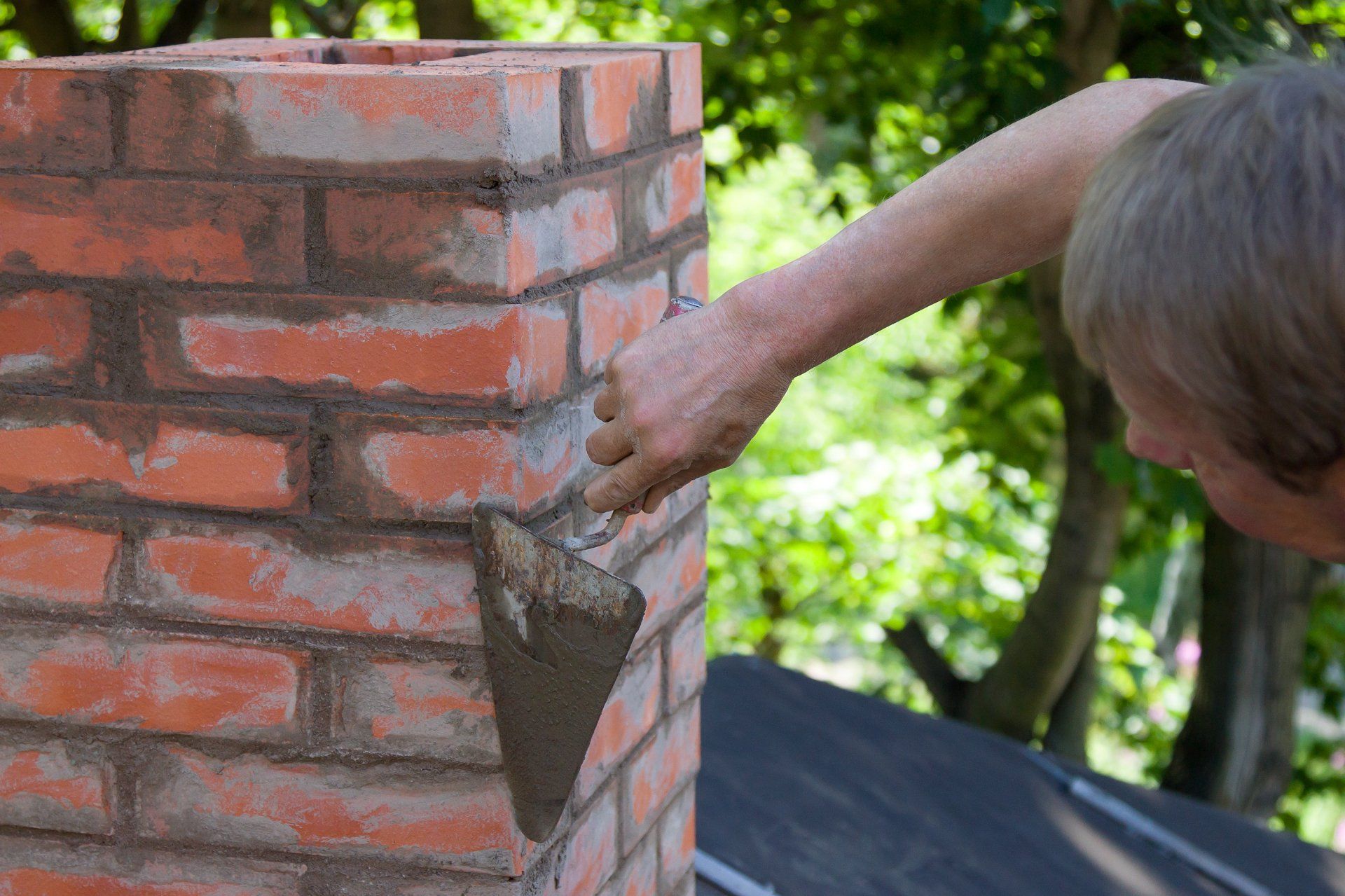Chimneys & Chimney Caps
Every chimney has one thing in common, in most cases it is out of sight of the homeowner. Way up high on the roof, where you can’t even see the top of the chimney. This is where the trouble begins. Like the concrete on your walkway or driveway that deteriorates over time from freeze-thaw cycles and harsh element exposure, the top of your chimney also breaks down. If this “crown” of your chimney is neglected it can lead to all sorts of problems; mortar joint breakdown, flu liner deterioration, rusting out of flu dampers, and the eventual destruction of the entire chimney if left unattended.
Tuckpointing & Rebuilding
Due to the exposure to the elements, usage and the passage of time, bricks and mortar eventually show signs of wear. Depending on the degree of deterioration different types of repairs are required. Timely maintenance of your chimney will ensure years of uninterrupted safe enjoyment and will enhance the value of your home.
Flaking Bricks
The faces of bricks may shale off or fall off. If left unattended, these bricks continue to deteriorate and entire bricks may eventually fall out of the chimney. To prevent continued deterioration and to avoid costly repairs: contact us to determine the reason for your chimney deterioration.

Crown Repairs
The crown is the cement slab at the top of a masonry chimney. Crown repairs range from minor crown seals to complete crown rebuilds. If deterioration is left unattended it will eventually lead to damage to the chimney structure below.
Protective Covers & Screens
There is a very large selection of styles and sizes of protective chimney covers also sometimes referred to as rain caps. Chimney covers are designed to prevent entry of water, leaves, animals, birds and any other type of debris into your fireplace or furnace chimney.
Flashing Repairs
The flashing is the strip of metal on the side face of the chimney that joins the base of the chimney to the roof line. The flashing prevents water from penetrating this joint and seeping into your home. Flashings typically should be inspected, serviced and re-sealed approximately every five years.
Water Repellant
Whether your house was built one or one hundred years ago, the bricks and the mortar are exposed to the damaging effects of rain, snow and wind. Chimney Saver is a water repellant sealer applied to the exterior chimney structure. It provides a layer of protection against the damaging effects of rain and snow. This is a chimney maintenance procedure that does forgo the need for tuckpointing or rebuilding.
Contact Us
Get In Touch
Contact us for a free quote.
16801 Oakmont Avenue
Gaithersburg, Maryland 20877
Contact Us
We will get back to you as soon as possible.
Please try again later.
When it comes to making decisions about changing your appearance, it can be a mix of excitement and challenges. However, we want you to know that we are committed to supporting you throughout the entire process.
Quick Links
All Rights Reserved | D&M Enterprises | Website Design by 29 Marketing

